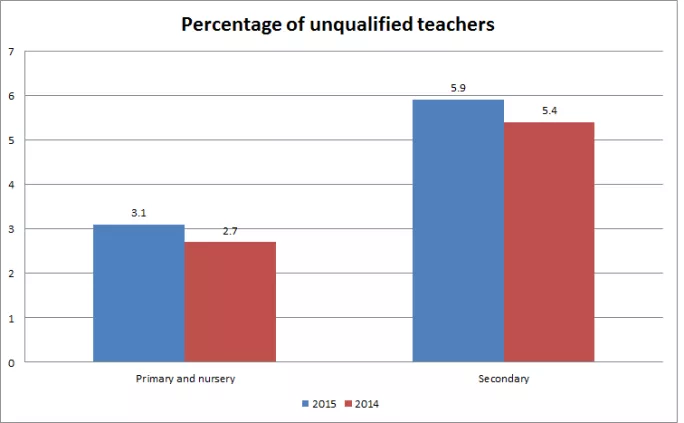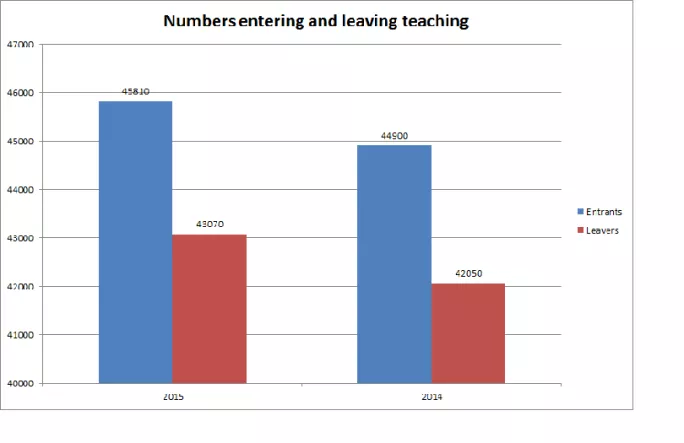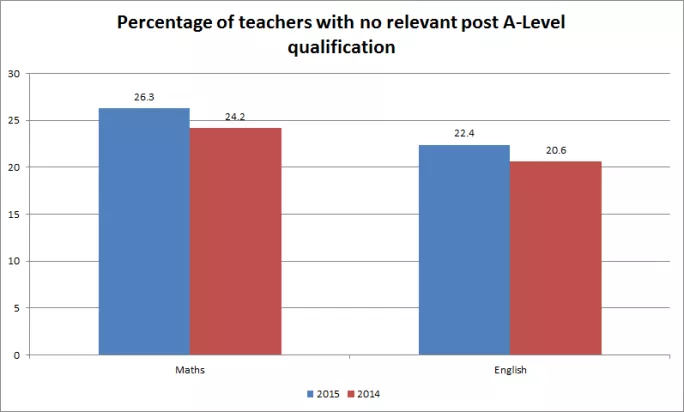Department for Education statistics on the teacher workforce published today, show that there has been a rise in the number of teachers and a drop in the number of vacancies.
But while the figures for 2015 could bring some relief to headteachers struggling to recruit, they also reveal the underlying difficulties schools are facing:
- The proportion of unqualified teachers has risen.
- There are more people joining the profession than leaving. But the size of that net gain in teacher numbers fell between 2014 and 2015.
- Pupil teacher ratios are larger in nursery and secondary schools compared with the previous year and with 2011.
Between 2014 and 2015, the number of full-time equivalent teachers, both qualified and unqualified, rose by 4,500 to 220,000 in primary schools but dropped by 2,500 to 210,900 in secondary schools. In both phases, the number of teachers without qualified teacher status (QTS) has risen.
A DfE spokesperson said: “Today’s figures show that teaching continues to be an attractive career with more teachers in our schools than ever before - 15,000 more since 2010 - and a year on year fall in the number of vacant posts.
“The number of new teachers entering our classrooms outnumbers those who retire or leave, while there are more teachers returning to the profession, demonstrating how many people relish the prospect of a career where they can transform lives every day.
“These statistics also show our reforms to the curriculum are continuing to deliver with more time being spent teaching children the English Baccalaureate subjects, providing children with a strong academic core to give them the best start in life.”
Unqualified teachers
The proportion of unqualified teachers overall has risen from 4.5 per cent to 4.9 per cent between 2014 and 2015. They are more likely to work in secondary than primary and more likely to work in secondary free schools, where 10.3 per cent do not have QTS, than maintained secondary schools where 4.8 per cent do not have QTS.
Entrants and leavers
Although more people entered the profession in 2015 than in 2014, there were also more leaving. And the gap between the numbers joining and leaving - the net gain in teacher numbers - shrank over the same period. There were 2,740 more full-time equivalent entrants than full-time equivalent leavers in 2015, compared with 2,850 more entrants than leavers in 2014.
Pupil-teacher ratio
The average number of pupils for each teacher has risen slightly overall. Since 2011, the most dramatic change has been in nursery schools.
Teaching outside subject
The statistics also show the difficulty in hiring in the core subjects. More than one in four people teaching maths have no relevant post A-level qualification in the subject and the same is true for more than one in five English teachers.
Vacancy rate
The official vacancy rate has dropped. There were 730 vacancies for full-time permanent teachers in state-funded schools in November 2015, compared with 780 in November 2014. The release today also says that the vacancy count for 2014, published last year, was incorrect. It had originally been said to be 1,030. Concerns about the reliability of the statistics were raised last year. Similarly the number of temporarily filled posts in 2014 has been corrected from 3,210 to 3,160. By November 2015, this had fallen to 2,870 temporarily filled posts.
Want to keep up with the latest education news and opinion? Follow TES on Twitter and like TES on Facebook









